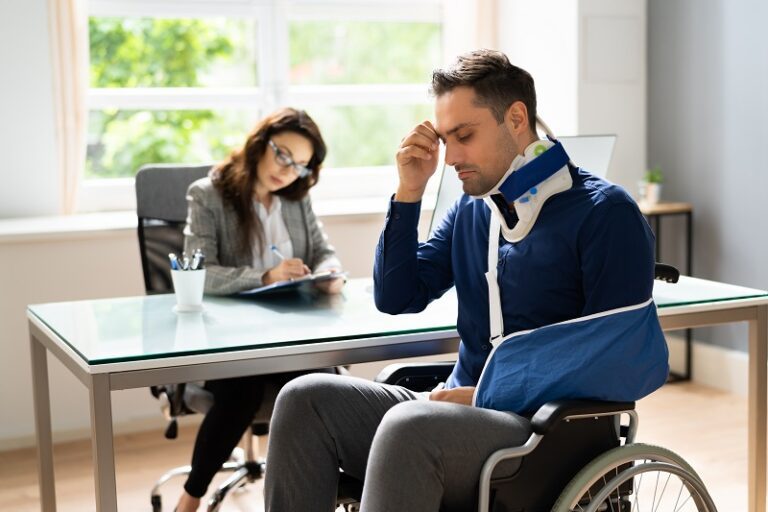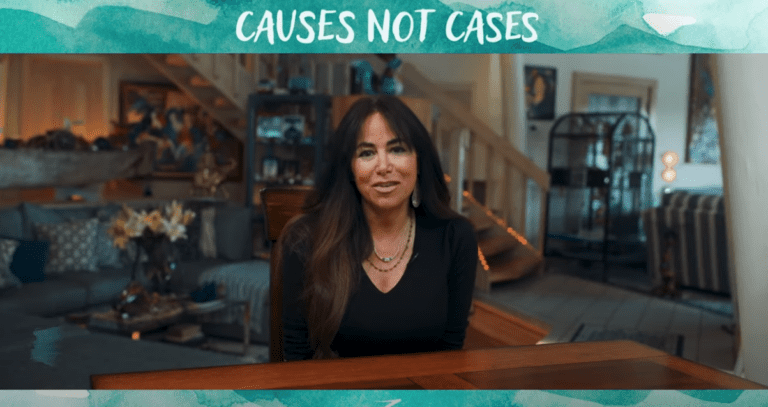In California, in 2016, there was a 7 percent increase in the number of fatal accidents, with more than 3,600 people losing their lives due to traffic-related crashes. Nationally, there were more than 37,000 traffic fatalities that same year, according to the U.S. Department of Transportation, also representing a statistically significant increase over the year before.
Thousands of others were injured in accidents on roadways throughout California and the United States. Learn what the main causes of these accidents was from the car accident attorneys at Gomez Trial Attorneys. Was it distracted driving? Speeding? Drunk driving? The answer might not be what you think.
A Common Factor in Most Crashes
To learn what is the most common cause of collisions, perhaps you should first know what it isn’t:
- It isn’t speeding, though USDOT reported that 10,111 deaths in 2016 where at least one driver was speeding. The number of speeding-related fatal crashes increased by 4 percent in 2016.
- It isn’t drunk driving, even though alcohol impairment resulted in 10,497 fatalities and there was an increase of 1.7 percent in the number of alcohol-related fatal crashes.
- It isn’t distraction, though driver distractions resulted in 3,450 deaths in 2016. Distracted driving fatal accidents actually decreased by 2.2 percent.
- It isn’t driver fatigue, though drowsy driving was a factor in more than 800 fatal accidents in 2016, a 3.5 percent decrease over the year before.
The most common cause isn’t any of the “Frightening Four” listed above, though it was a factor in each of the deaths represented in those statistics. If you haven’t figured it out yet, perhaps three recent news stories will give you the answer:
- The transportation chief for Dallas, Texas, said in early October 2019, that the city’s current ranking of fifth worst U.S. city for traffic accidents is “unacceptable.” The city council is looking at ways to dramatically reduce the number of traffic collisions while making mobility safer by joining the Vision Zero strategy. 40 other cities across the nation have already joined Vision Zero. The Vision Zero strategy aims to stop blaming victims of traffic-related crashes by saying they should have worn their seat belts or they should have slowed down. Instead, the strategy concedes that “human error happens” and that there should be ways to encourage safer driving through design.
- A crash in New Jersey on the eve of a holiday caused injuries to twelve people and caused the Lincoln Tunnel to be shut down for several hours, stranding commuters in heavy traffic. The accident occurred when the driver of a garbage truck struck several vehicles before overturning. Investigators now say that the accident was the result of the driver mistaking the gas pedal for the brake pedal. The official cause, as noted by the Hudson County Prosecutor’s Office? Human error.
- Kansas has experienced an increase in fatal car accidents, with 220 reported fatal crashes for the year-to-date and another fatal accident still being processed. The state reported that four of the top five causes of crashes were related to actions taken by the driver, including distracted driving. As one trooper interviewed stated, 90 percent of the crashes are caused by human error. If these driver-caused errors were eliminated, he said, 40,000 lives in the nation and 400 lives in Kansas could be saved each year.
There you have it: The most common cause of collision is human error.
What Is Human Error When It Comes to Car Accidents?
Human error in business terms could be defined as a mistake in the planning or execution of a task that fails to meet a goal. The same holds true in car accidents. The desired outcome, or goal, of a car ride is arriving at one’s destination safely and lawfully, the following scenarios demonstrate how a mistake in planning or execution of a task results in injuries or even death:
- A woman, while driving home from her night shift job, experiences a moment of inattention due to extreme drowsiness. During this moment of inattention, she rear-ends a vehicle driven by an elderly man. The accident causes the man to be injured. The human error in this scenario would be driving while fatigued, which caused her to be inattentive to the roadway. The mistake in planning in this situation could be failing to secure a ride with a driver who was not fatigued, calling a cab, napping before driving home from work. The mistake in execution would be the moment of inattention in which she caused the accident.
- A young man went out for drinks with friends to celebrate his 21st birthday. Upon leaving the bar, he was asked several times if he was safe to drive. While he admittedly felt a bit tipsy, he did not want to bother his friends by asking for a ride or appear to be a “lightweight” who was unable to handle his liquor. On the way home, he ran a red light and caused an accident which resulted in injuries to himself as well as the driver and passengers in the other car. In this scenario, the mistake in planning could be the decision to drink and not have a designated driver to take him home. Additionally, he could have asked a sober friend or called a cab or rideshare. The mistake in execution would be running a red light, which caused the accident.
- A teenage boy was out with three of his friends from school late at night. The group encountered another group of teens in another vehicle and the two drivers decided to see whose car was fastest by racing down a straight-away. While driving too fast for the conditions of the road, one of the drivers lost control of his vehicle, causing a rollover accident and serious injuries to some of his passengers. The mistake in planning in this scenario would be choosing to race another car in a nighttime driving situation where he had other teens in the car with him—all choices that increase one’s risk of having an accident. The mistake in execution would be traveling too fast for the conditions of the road.
- A woman, recently recovering from surgery, chose to drive while taking prescription medications. The medication made her feel dizzy while behind the wheel, causing her to drift out of her lane of travel and sideswipe another vehicle in the lane beside hers. The mistake in planning here would be making the choice to drive while impaired by prescription drugs. The mistake in execution would be drifting out of her lane into another lane of travel and sideswiping the other vehicle.
Does Human Error Equal Negligence?
Negligence is a legal term that is the foundation of most car accident claims against another driver. To have a successful outcome to a claim seeking compensation from another person for injuries suffered in an accident, one must be able to prove that the at-fault party was negligent. Negligence is established by showing:
- The at-fault party owed a duty of care to the injured party. In the case of a car accident, the duty of care could be as simple as following traffic laws and operating the vehicle in a safe manner.
- There was a breach in the duty of care. This means that the at-fault party failed for whatever reason to operate his or her vehicle safely and obey traffic laws.
- This breach resulted in the accident, which caused the victim to suffer an injury.
While there are certainly examples to be found, particularly in some cases involving road rage, most drivers don’t get behind the wheel planning to get into an accident and injure someone else. Instead, they fail to adequately plan or execute their task of driving safely and following traffic laws, creating the breach—or mistake in planning and execution—that resulted in the accident.
Most of the causes of accidents mentioned above are examples of human error in which negligence could be proven. To recap, these causes as well as others not yet mentioned include:
- Distracted driving
- Alcohol or drug impairment
- Speeding or driving too fast for the conditions of the road
- Fatigue
- Running a red light
- Tailgating
- Making an improper turn
- Inadequate surveillance, which is failing to ensure that no vehicles are approaching before entering a travel lane
- Reckless driving or road rage
- Product defects, in which a company negligently designed or manufactured a car part that did not work as intended and caused an accident
- Improper lane change, or failing to use one’s turn signal
If I Was the Victim of Someone Else’s Error, What Should I Do?
In California, drivers involved in an accident are required to make a written report of the accident for the California Highway Patrol or the local police department within 24 hours. Accidents must also be reported to the DMV within 10 days if they involve any injury, no matter how slight, if someone died in the accident, or if the accident resulted in more than $750 worth of property damage. Most insurance policies require that you also notify your insurance company of an accident, even if you were not at fault.
California is a liability state when it comes to car accidents. What this means is that, when injured in an accident, the victim must seek compensation either through their own insurance policy or they must seek compensation from the other driver’s insurance policy through a third party claim. If you choose to file a claim against your own insurance policy, and your accident was caused by someone else, you must have one of the following types of optional coverage:
- Uninsured or underinsured motorist coverage
- Comprehensive coverage
- Collision coverage
- Medical payments coverage
If you were injured in an accident that was the fault of someone else, you should speak to an experienced car accident attorney who may be able to help you make your car accident claim and seek a settlement that fairly compensates you for your damages. If a fair settlement from the insurance company is not forthcoming, you may be eligible to seek compensation for your injuries by filing a car accident lawsuit. Here are some highlights of that process in California:
- Generally, the time limit for filing a car accident lawsuit is two years from the date of the crash. A very limited set of circumstances allow extension of the deadline. Cases filed against a governmental entity have a shorter deadline. Your attorney can advise you if there are circumstances that make that deadline shorter or longer—but don’t delay and let the statute expire.
- Often there is more than one at-fault party in an accident. If your actions were partially responsible for the accident, you may still file a lawsuit against other at-fault parties. However, any damage award you receive will be reduced by the percentage of blame you bear. For example, if you are found to be 10 percent responsible for the accident, your damage award will be reduced by 10 percent.
- Through a car accident lawsuit, you can seek both economic damages such as medical expenses, lost wages, loss of employment or business opportunities, the cost to repair or replace your vehicle or burial expenses; and non-economic damages such as pain and suffering, disfigurement, physical impairment or mental distress.
- Drivers who are injured while driving without insurance are barred from collecting compensation from non-economic pain and suffering-type damages, even if the accident was entirely the other driver’s fault. The exception to this is in cases where the uninsured driver was injured in an accident that was caused by someone who was driving under the influence of alcohol or drugs.
For more information about how the personal injury claims process works or to schedule a consultation and case review, contact a car accident attorney you trust.







